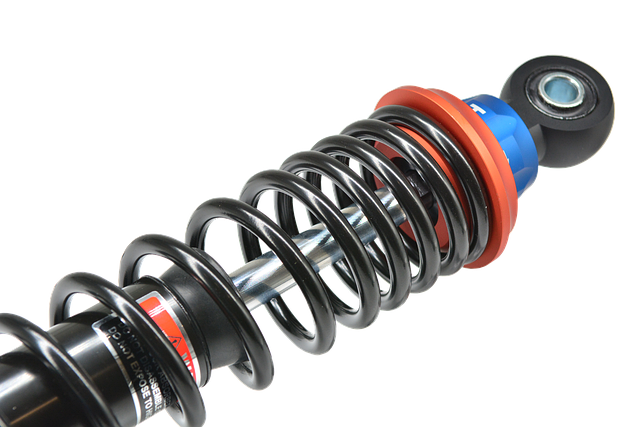How Shock Absorbers Work

What exactly do shock absorbers do?
There are a couple of things that they do. First of all, they can help control the movement of the suspension and springs, but they can also make sure that your tyres are on the ground. Whether you are in motion, or if you have parked your car, the surface of the tyres at the base is really the only part on the road. This contact with the ground is going to be reduced or broken if your shock absorbers are not working, affecting your ability to use your brakes, steer the car, or even just drive it.
Shock absorbers, despite popular belief, are not there to support the entire weight of the vehicle.
More in detail…
The first thing you have to think about is science. When you look at shock absorbers, you have to think of movement toward kinetic energy, and how it is able to convert it to heat or thermal energy that must be dissipated through a mechanism of exchange.
This is actually easier than it sounds.
If you think of an oil pump, then you can probably understand what a shock absorber does. Each of the pistons that you have works because of the piston rod that is working with hydraulic fluid, creating pressure within the tube. Your suspension, which is going to go up and down, is going to cause the hydraulic fluid to flow through tiny holes which are part of your pistons. It is because of these tiny holes that the fluid in the pistons can be slowed down, and therefore it will slow down the movement of the suspension and springs.
Therefore, shock absorbers, if they are working properly, can help you automatically adjust to any and all road conditions, especially as it continues to move faster, based upon the amount of resistance that is produced. If you are in the UK you might want to see ‘UK shock absorbers‘.
Types of shock absorbers
Each shock absorber performs in the exact same manner, regardless of the suspension design of the type of vehicle that it is on, yet they can be designed in many different ways.
Regardless of the application, it is used for, they are designed to fit one of three potential scenarios, which includes using them with struts and shock absorbers.
Conventional telescopic shock absorbers
If you are thinking of the simplest version of a shock absorber, it is this one, and if it fails to work, it’s easier to simply replace it. They are typically found at the rear and front suspension system locations, and they are almost always inexpensive.
Strut-type shock absorbers
These will perform in the same way as the other shock absorber, placed where the struts are going to replace part of the suspension system, typically on vehicles where greater forces and loads are expected. These are also found at the rear and front of vehicles, such as larger or medium-sized cars, which is why you will find a strut-based suspension design working with these shock absorbers. It is in the strut category that these are placed, and these can also be further divided into repairable and sealable units. These sealed units must be fully replaced, whereas those that are repairable, also called McPherson struts, can be fitted with replacement strut cartridges.
Spring seat shocks
These types of shock absorbers are very similar to both strut type and telescopic shock absorbers. Similar to struts, the spring seat shock is a dampening device, made as a singular unit. They are different from struts, however, because they are not designed to work with high side loads. They are built in a similar way to conventional shock absorbers, but they are also sealed which is why, when they break down, you must replace them.
How do they work?
In your mind, you need to picture a pump-like device, one that is going to interact with the tyres of your vehicle, on any road surface, working with the rebound of the suspension springs. If your vehicle remains in contact with the road, and you are steering your vehicle, or even applying the brakes, it will keep you safe based upon their overall functionality and design.